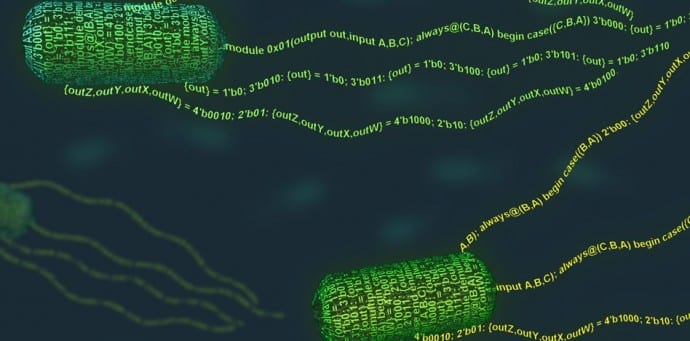A new programming language gives researchers the tools to create biological circuits inside living cells.
The tool uses an existing language called Verilog, which is used by chip designers to design electronic circuits.
The idea is to make programming cells more like programming a computer.

It is literally a programming language for bacteria, said Voigt.
You use a text-based language, just like youre programming a computer.
Synthetic biology aims to make it possible to treat cells as machines that can be engineered and programmed.

Thats where Verilog comes in.
Voigts team understood they could do the same with DNA circuits.
Called Cello, their system takes a Verilog design and changes it into a DNA wiring diagram.
This is put in to a machine that creates a strand of DNA that encodes the stated function.
The DNA can then be inserted into a microbe.
They have designed and tested 60 circuits 45 worked perfectly the first time they were tried.
It also lowers the barrier for entry for those without expertise in biology, he says.
Voigt said he wants to make the language available on the Web for others to use.
The team reported their research in the journal Science.
source: www.techworm.net